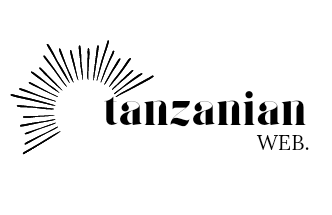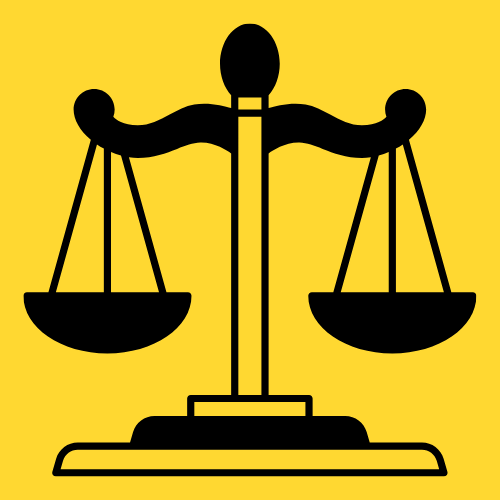“200”, Aptitude Test Questions and Answers for Accounts Assistant Officer II – MDA & LGA.
ABSTRACT
This collection of 200 multiple-choice
questions covers key accounting principles, practices, and procedures,
including public sector finance, internal controls, and international standards
such as IPSAS and IFRS. Each question includes an answer with rationale, making
it a practical tool for exam preparation, professional development, and
enhancing competency in financial management and accountability.
Prepared by: Accounts Assistant Officers
Compiled by Johnson Yesaya Mgelwa.
A lawyer stationed in Dar-es-salaam.
0628729934.
Date: July 15, 2025
Dear applicants,
This collection of questions and answers
has been carefully prepared to help all of you to understand the key areas
tested during the interview. The goal is to provide a useful, and practical
study guide so you can all perform confidently and fairly in the selection
process. I wish you the best of luck, and may this resource support you in
achieving success!
Warm regards,
Johnson Yesaya Mgelwa
For Personal Use by Applicants Preparing
for MDA and LGA Accounts Assistants Officer II interview at Public Service
Recruitment Service.
ALL
QUESTIONS ARE COMPILED TOGETHER.
1. Which document is primarily used to
record all daily cash receipts and payments?
A. General Ledger B. Petty Cash Voucher C.
Cash Book D. Journal Proper
Answer: C
Rationale: The cash book records every cash transaction as it occurs,
both receipts and payments. It serves as both a journal and a ledger for cash,
making it the key document for monitoring daily cash flow in public offices.
2. Which of the following accounts
normally has a debit balance?
A. Revenue B. Capital C. Liabilities D. Assets
Answer: D
Rationale: Assets represent resources owned by the entity and are
recorded with debit balances. Revenue, capital, and liabilities have normal
credit balances.
3. In government accounting, what is the
main purpose of IFMIS?
A. Storing employee records B. Automating
and integrating financial transactions C. Controlling procurement
procedures D. Producing audit reports only
Answer: B
Rationale: IFMIS (Integrated Financial Management Information System)
automates and integrates all public financial transactions — from budget
preparation to expenditure — ensuring transparency and accountability.
4. What is the function of a control
account?
A. To replace subsidiary ledgers B. To
record all daily petty cash C. To summarize transactions from subsidiary
ledgers D. To adjust trial balance errors
Answer: C
Rationale: A control account provides a summarized total of individual
accounts in subsidiary ledgers, such as debtors or creditors, ensuring easier
reconciliation and verification.
5. Which statement best describes the
principle of double entry?
A. Recording each transaction twice for
safety B. Recording only cash transactions C. Every debit has a
corresponding credit D. Recording all income first
Answer: C
Rationale: Double entry ensures that each transaction affects at least
two accounts — one debit and one credit — keeping the accounting equation
balanced.
6. What does “Imprest” refer to in
government accounting?
A. Bank overdraft facility B. Advance
of cash for specific expenses C. Loan to staff D. Deferred payment
Answer: B
Rationale: Imprest is a fixed cash amount given to an officer to cover
specific minor expenditures, replenished after submission of receipts and
vouchers.
7. The trial balance is prepared to:
A. Detect all types of errors B. Show the
financial position C. Prepare the cash book D. Check arithmetical accuracy
of ledger postings
Answer: D
Rationale: A trial balance ensures that total debits equal total
credits, confirming mathematical accuracy in ledger postings though not all
errors are revealed.
8. Which item would appear on the debit
side of a bank reconciliation statement?
A. Bank charges B. Unpresented
cheques C. Uncredited deposits D. Dishonoured cheques
Answer: A
Rationale: Bank charges are deducted by the bank but not yet recorded in
the cash book, so they are added (debited) during reconciliation to match the
bank statement.
9. What is the primary role of the
Controller and Auditor General (CAG)?
A. Auditing and reporting on public
accounts B. Authorizing government expenditure C. Collecting taxes D.
Managing IFMIS
Answer: A
Rationale: The CAG ensures proper use of public funds through auditing
all government accounts and reporting to Parliament to enhance transparency.
10. The document that supports a payment
voucher is called:
A. Cash book B. Payment supporting
document C. Petty cash voucher D. Vote book
Answer: B
Rationale: A payment voucher must be accompanied by supporting documents
such as invoices or receipts that justify the transaction.
11. If total credits exceed total debits
in a trial balance, the business has:
A. More assets B. More expenses C. More
income or liabilities D. An error in balancing
Answer: C
Rationale: Credit balances normally represent income and liabilities, so
when credits exceed debits, it indicates a surplus or more obligations.
12. A petty cash system is maintained
under which method?
A. General journal B. Control account C. Imprest
system D. Accrual basis
Answer: C
Rationale: The imprest system provides a fixed amount for minor
expenses, which is replenished when exhausted — keeping control and
accountability of small payments.
13. Which of the following is not
an objective of internal control?
A. Accuracy of records B. Maximizing
profit C. Safeguarding assets D. Preventing fraud
Answer: B
Rationale: Internal control focuses on protecting assets, ensuring
accuracy, and preventing fraud — not on profit maximization, which is more of a
private sector goal.
14. A liability increases when:
A. A debtor pays cash B. The business
borrows money C. Cash is used to buy assets D. Income is received
Answer: B
Rationale: Borrowing money creates an obligation to pay back, hence
increasing liabilities.
15. What is the purpose of a ledger?
A. To classify and summarize
transactions B. To record only cash transactions C. To record invoices D.
To verify payment vouchers
Answer: A
Rationale: The ledger contains individual accounts for assets,
liabilities, income, and expenses, summarizing transactions from journals.
16. Which of the following errors will
not affect the trial balance agreement?
A. Error of omission B. Error in
totaling C. Error in posting one side D. Error in balancing account
Answer: A
Rationale: If a transaction is completely omitted from the books, both
debit and credit sides are equally missing, leaving the trial balance still in
agreement.
17. Who is responsible for authorizing
expenditure in a public institution?
A. Accountant B. Accounting Officer C.
Cashier D. CAG
Answer: B
Rationale: The Accounting Officer (e.g., Permanent Secretary or
Director) is legally responsible for the authorization and control of public
expenditure.
18. A debit note is issued when:
A. Goods are returned to supplier B. Supplier
undercharges buyer C. Buyer overpays supplier D. A payment is delayed
Answer: B
Rationale: A debit note notifies a supplier that more money is owed,
usually when the supplier’s invoice was undercharged.
19. Which side of the cash book records
payments?
A. Left side B. Right side C. Both
sides D. None
Answer: B
Rationale: In a two-column cash book, payments are recorded on the right
(credit) side, while receipts are on the left (debit) side.
20. Which accounting concept requires
recording transactions at the amount paid or payable?
A. Going concern B. Consistency C. Historical
cost D. Prudence
Answer: C
Rationale: The historical cost concept dictates that assets and
liabilities be recorded at their original transaction value, not market value.
21. In Tanzania, which body regulates the
accountancy profession?
A. TRA B. NBAA C. CAG D. MoFP
Answer: B
Rationale: The National Board of Accountants and Auditors (NBAA) sets
standards, conducts examinations, and regulates the accounting profession in
Tanzania.
22. What is the main source document for
recording credit purchases?
A. Supplier’s invoice B. Purchase
order C. Goods received note D. Debit note
Answer: A
Rationale: A supplier’s invoice provides the amount and details of goods
purchased on credit, serving as the basis for accounting entry.
23. What is shown on the debit side of a
Receipts and Payments Account?
A. All payments B. All cash received C.
Income earned D. Outstanding income
Answer: B
Rationale: The Receipts and Payments Account records all cash inflows
(receipts) on the debit side and all cash outflows (payments) on the credit
side.
24. In public sector accounting, the
“Vote Book” is mainly used to:
A. Prepare budgets B. Record and
monitor expenditure against allocations C. Approve payments D. Maintain
ledgers
Answer: B
Rationale: The vote book tracks actual expenditure compared to approved
allocations under each vote, ensuring that spending does not exceed the budget.
25. Which of the following is not
a type of error in accounting?
A. Error of commission B. Error of
principle C. Error of recordation D. Compensating error
Answer: C
Rationale: “Error of recordation” is not a recognized accounting term;
others are standard types of errors found in bookkeeping and reconciliation.
26. Which of the following is an example
of a real account?
A. Salaries Expense B. Rent Income C. Building
Account D. Drawings
Answer: C
Rationale: Real accounts relate to tangible or intangible assets such as
land, building, or machinery. They represent items with continuing value to the
organization.
27. When a customer returns goods sold on
credit, the seller records the transaction in:
A. Sales Returns Journal B.
Purchases Returns Journal C. Sales Journal D. General Journal
Answer: A
Rationale: The sales returns journal records goods returned by
customers, reducing accounts receivable and total sales.
28. Which statement best describes the
accrual basis of accounting?
A. Revenue and expenses are recognized
when earned or incurred B. Only cash transactions are recorded C. Expenses
are recorded after payment D. Revenue is recognized after cash collection
Answer: A
Rationale: The accrual basis records revenues when earned and expenses
when incurred, regardless of when cash changes hands, ensuring accurate
financial reporting.
29. A payment voucher must always be:
A. Approved by cashier B. Authorized
and supported by evidence C. Issued by supplier D. Recorded before approval
Answer: B
Rationale: A payment voucher is valid only when properly authorized and
supported by evidence such as invoices or receipts to prevent misuse of funds.
30. When a cheque issued by an
organization is not yet presented to the bank, it is called:
A. Dishonoured cheque B. Unpresented
cheque C. Uncredited deposit D. Outstanding cheque
Answer: B
Rationale: An unpresented cheque has been issued and recorded in the
cash book but not yet cleared by the bank; it affects bank reconciliation.
📘 Get the Full Aptitude Test Questions PDF through your Gmail (Questions 1–200)
You’ve just accessed the first 30 questions. The full set of 200 expertly prepared Aptitude Test questions for Accounts Assistant Officer II – MDA & LGA. Is available, pay, and get access.
To get access to the full PDF, please make a payment of Tsh 10,000 to the LIPA numbers below:
After payment, please send a text message to notify us of your payment:
⚠️ Important Notice
- The PDF will be watermarked with your name and phone number and protected for personal use only.
- Redistribution, sharing, screenshotting, or copying the contents is strictly prohibited. When you share unlawfully, your name and phone number are visible and easy to trace as you leaked a document to other third parties.
- Legal action may be taken against the misuse of this material.
Thank you for supporting quality content. Best of luck in your interview preparation!


%20(10).png)





0 Comments
PLACE YOUR COMMENT HERE
WARNING: DO NOT USE ABUSIVE LANGUAGE BECAUSE IT IS AGAINST THE LAW.
THE COMMENTS OF OUR READERS IS NOT OUR RESPONSIBILITY.